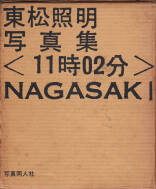Provincial city (signed)
by Yoshie Atsushi
Photographs: Yoshie Atsushi
Text: ITO Haruna and Hara Koichi Hichiro / sei (trout)
Publisher: Sokyu-sha Tokyo
128 pages
Pictures: 122 illusrations
Year: 2014
Comments: 230 x 250 x 16 mm, hard cover, limited edition of 600 copies.
There is no such thing as a "provincial city"
The term is said to refer to all cities other than the nation´s capital. I had become facinated at some point with such reative cities, countlessly disprsed across Japan. While at once existing as that particular place, the provancial city seemed somehow to simultaneously cannote and embody some other city, as if in yearning for some phantasmagorical town.
In reality however, there is but an endless lanscape of such cities-unique collectives built over time in their respective regions-being encroached upon by systems of uniform urban planning. I could do little but simply wander through them with camera in hand.
Such towns, lured into these urban designs by the promise of productivity, freely left behinde a manner of existence that was perhaps better suited to the locale and linked instead upon arterial roads. At times it fells like walking through a mise-en-scene with merely some rearrangement of backdrops. That said, it would be fruitless to capture proof of this phenomenon in the photograph; neither am I interested in seeking from within them the disappering features and hisories unique to these places.
Eventually the alluring phantasmal city within me dissolved, and I became mindful that the only way to truly perceive the city was in the actual scene before my eyes. There seemed to be noother way to face the wold head-on except through the accumulation of fragments of the new reality I confronted. And yet nom atter how I layered, one upon another, countless interchangeable images capturing daily sscenes of street life, I could not manage to stack them high enough, the base invariably giving way like a mound of sand.
Even so, in some of my everyday walks, a scene will occasionally leap into view with vivid rawness. It might have been brought about by the light, of the taut air suspendet in that particular place, or the aspect of balance between foreground and background, or perhaps my wonderment at a building that has sustained so much time still standing there before me. Whatever the cause, the important question is how I might receive this scene without imposing my own thought on it. That way, with the photograph situated in a familiar space, it leads me to a realm that holds the hidden extraorinariness of that locale. And at that moment the provincial city, that incorporeal town, seems close to coming through.
more books tagged »Japanese« | >> see all
-
Infinity
by Miyako Ishiuchi
sold out -
Shimakage (signed)
by Chieko Shiraishi
sold out -
Seijinshiki
by Charles Freger & Little Fish
sold out -
A Wind Blowing Through
by Shoji Ueda
sold out -
Thirtyfour Parking Lots (signed)
by Takashi Homma
sold out -
Toransupearento (first edition - signed)
by Daisuke Yokota
sold out
Random selection from the Virtual bookshelf josefchladek.com
Provincial city (signed)
by Yoshie Atsushi
Photographs: Yoshie Atsushi
Text: ITO Haruna and Hara Koichi Hichiro / sei (trout)
Publisher: Sokyu-sha Tokyo
128 pages
Pictures: 122 illusrations
Year: 2014
Comments: 230 x 250 x 16 mm, hard cover, limited edition of 600 copies.
There is no such thing as a "provincial city"
The term is said to refer to all cities other than the nation´s capital. I had become facinated at some point with such reative cities, countlessly disprsed across Japan. While at once existing as that particular place, the provancial city seemed somehow to simultaneously cannote and embody some other city, as if in yearning for some phantasmagorical town.
In reality however, there is but an endless lanscape of such cities-unique collectives built over time in their respective regions-being encroached upon by systems of uniform urban planning. I could do little but simply wander through them with camera in hand.
Such towns, lured into these urban designs by the promise of productivity, freely left behinde a manner of existence that was perhaps better suited to the locale and linked instead upon arterial roads. At times it fells like walking through a mise-en-scene with merely some rearrangement of backdrops. That said, it would be fruitless to capture proof of this phenomenon in the photograph; neither am I interested in seeking from within them the disappering features and hisories unique to these places.
Eventually the alluring phantasmal city within me dissolved, and I became mindful that the only way to truly perceive the city was in the actual scene before my eyes. There seemed to be noother way to face the wold head-on except through the accumulation of fragments of the new reality I confronted. And yet nom atter how I layered, one upon another, countless interchangeable images capturing daily sscenes of street life, I could not manage to stack them high enough, the base invariably giving way like a mound of sand.
Even so, in some of my everyday walks, a scene will occasionally leap into view with vivid rawness. It might have been brought about by the light, of the taut air suspendet in that particular place, or the aspect of balance between foreground and background, or perhaps my wonderment at a building that has sustained so much time still standing there before me. Whatever the cause, the important question is how I might receive this scene without imposing my own thought on it. That way, with the photograph situated in a familiar space, it leads me to a realm that holds the hidden extraorinariness of that locale. And at that moment the provincial city, that incorporeal town, seems close to coming through.
more books tagged »Japanese« | >> see all
-
Infinity
by Miyako Ishiuchi
sold out -
Shimakage (signed)
by Chieko Shiraishi
sold out -
Seijinshiki
by Charles Freger & Little Fish
sold out -
A Wind Blowing Through
by Shoji Ueda
sold out -
Thirtyfour Parking Lots (signed)
by Takashi Homma
sold out -
Toransupearento (first edition - signed)
by Daisuke Yokota
sold out
Random selection from the Virtual bookshelf josefchladek.com
Provincial city (signed)
by Yoshie Atsushi
Photographs: Yoshie Atsushi
Text: ITO Haruna and Hara Koichi Hichiro / sei (trout)
Publisher: Sokyu-sha Tokyo
128 pages
Pictures: 122 illusrations
Year: 2014
Comments: 230 x 250 x 16 mm, hard cover, limited edition of 600 copies.
There is no such thing as a "provincial city"
The term is said to refer to all cities other than the nation´s capital. I had become facinated at some point with such reative cities, countlessly disprsed across Japan. While at once existing as that particular place, the provancial city seemed somehow to simultaneously cannote and embody some other city, as if in yearning for some phantasmagorical town.
In reality however, there is but an endless lanscape of such cities-unique collectives built over time in their respective regions-being encroached upon by systems of uniform urban planning. I could do little but simply wander through them with camera in hand.
Such towns, lured into these urban designs by the promise of productivity, freely left behinde a manner of existence that was perhaps better suited to the locale and linked instead upon arterial roads. At times it fells like walking through a mise-en-scene with merely some rearrangement of backdrops. That said, it would be fruitless to capture proof of this phenomenon in the photograph; neither am I interested in seeking from within them the disappering features and hisories unique to these places.
Eventually the alluring phantasmal city within me dissolved, and I became mindful that the only way to truly perceive the city was in the actual scene before my eyes. There seemed to be noother way to face the wold head-on except through the accumulation of fragments of the new reality I confronted. And yet nom atter how I layered, one upon another, countless interchangeable images capturing daily sscenes of street life, I could not manage to stack them high enough, the base invariably giving way like a mound of sand.
Even so, in some of my everyday walks, a scene will occasionally leap into view with vivid rawness. It might have been brought about by the light, of the taut air suspendet in that particular place, or the aspect of balance between foreground and background, or perhaps my wonderment at a building that has sustained so much time still standing there before me. Whatever the cause, the important question is how I might receive this scene without imposing my own thought on it. That way, with the photograph situated in a familiar space, it leads me to a realm that holds the hidden extraorinariness of that locale. And at that moment the provincial city, that incorporeal town, seems close to coming through.
more books tagged »Japanese« | >> see all
-
Infinity
by Miyako Ishiuchi
sold out -
Shimakage (signed)
by Chieko Shiraishi
sold out -
Seijinshiki
by Charles Freger & Little Fish
sold out -
A Wind Blowing Through
by Shoji Ueda
sold out -
Thirtyfour Parking Lots (signed)
by Takashi Homma
sold out -
Toransupearento (first edition - signed)
by Daisuke Yokota
sold out
Random selection from the Virtual bookshelf josefchladek.com

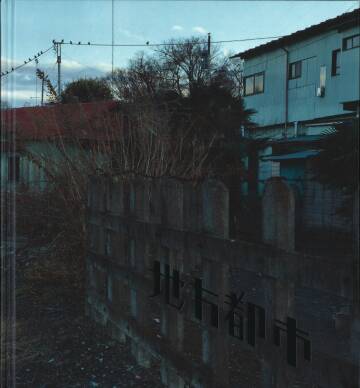






;jpg?c=f09c595d95fe042449b556fbbf2b2c79)

;jpg?c=7c950876a3a3668296040dcdc875d10e)
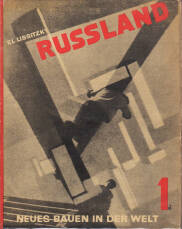




_;jpg?c=419d59e36ac6254ab2ee57eb072962ae)
;jpg?c=b1b39a5e89536d280e96f22126449430)
;jpg?c=04c5d88ef1d404ab56c7f95c85f3db61)
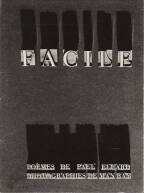
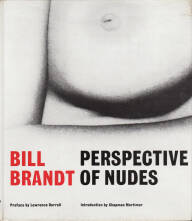
;jpg?c=200f63648ea7b2cb994afa4cb65b2f0c)
